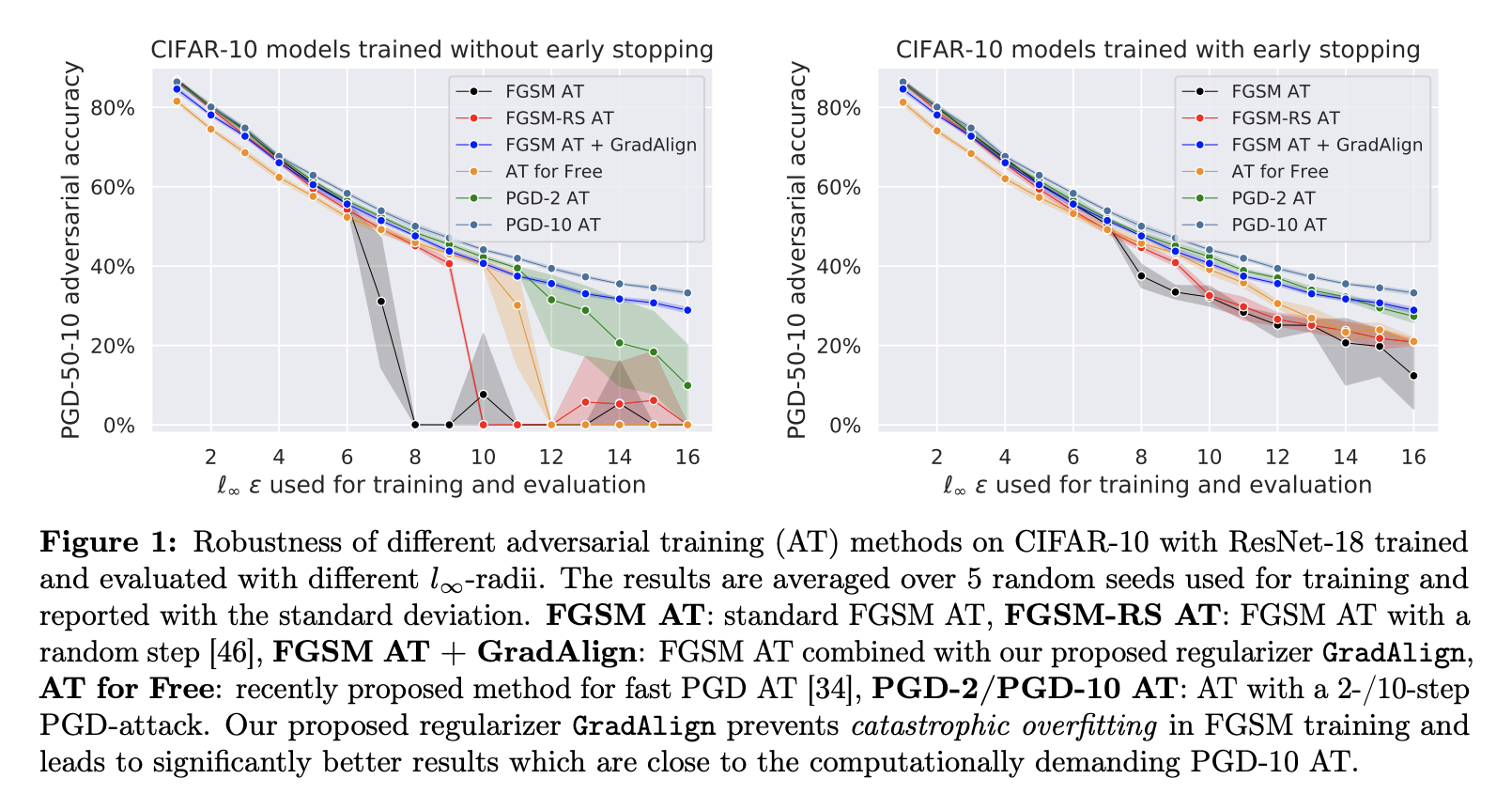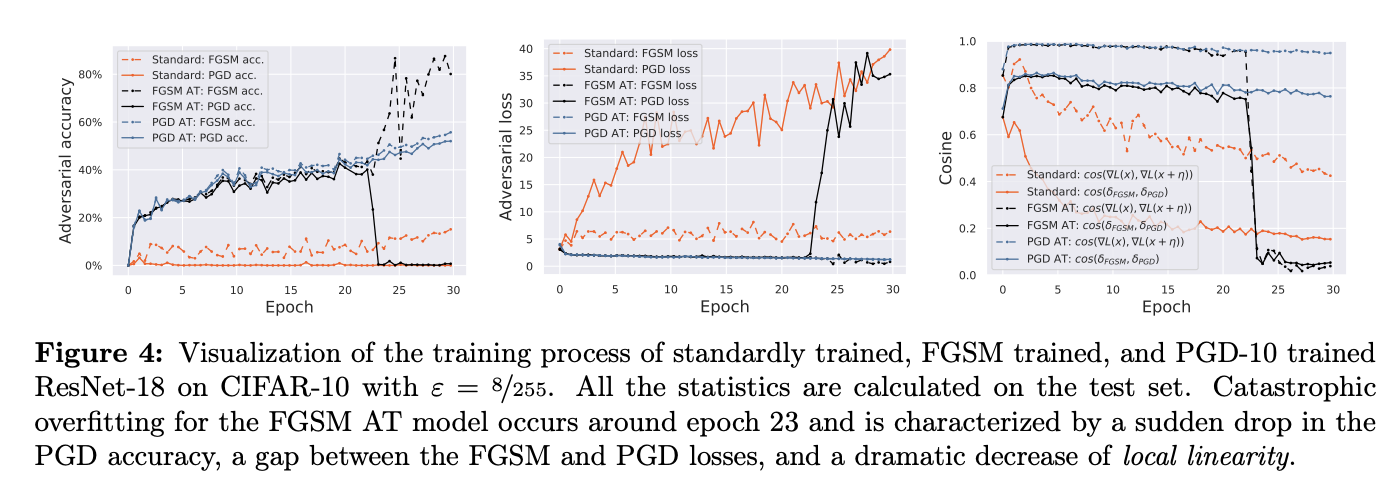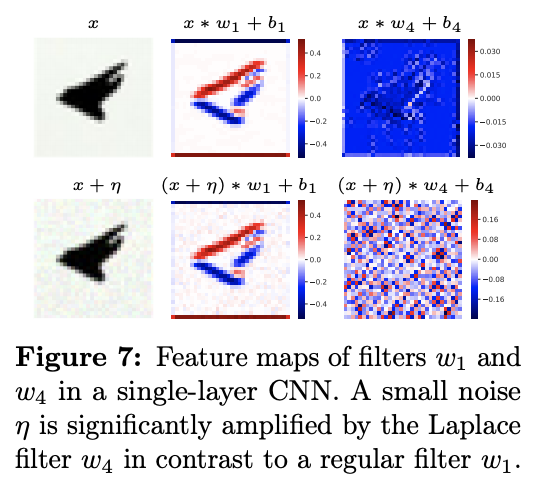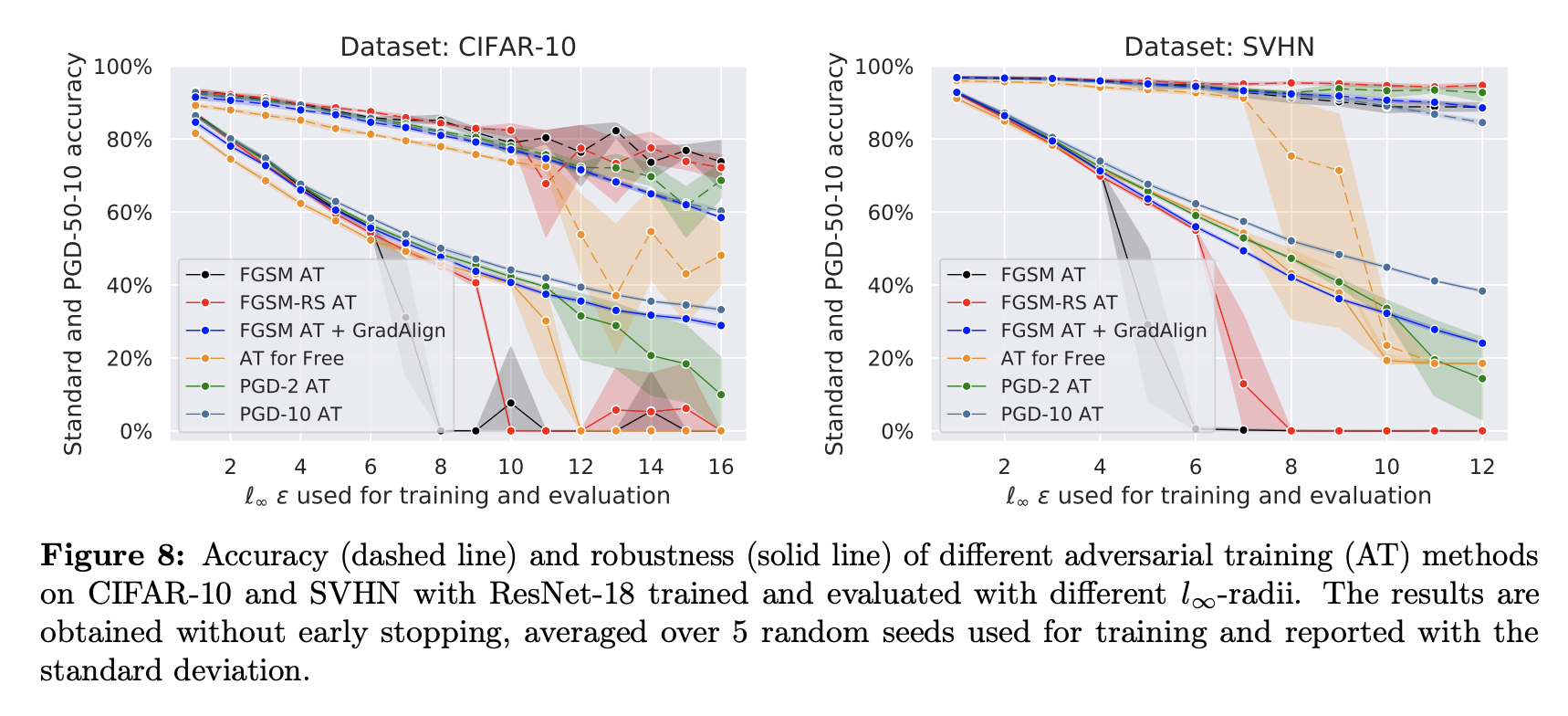Maksym Andriushchenko (EPFL), Nicolas Flammarion (EPFL)
Paper: https://arxiv.org/abs/2007.02617
NeurIPS 2020
A recent line of work focused on making adversarial training computationally efficient for deep learning models. In particular, Wong et al. (2020) showed that Linf-adversarial training with fast gradient sign method (FGSM) can fail due to a phenomenon called "catastrophic overfitting", when the model quickly loses its robustness over a single epoch of training. We show that adding a random step to FGSM, as proposed in Wong et al. (2020), does not prevent catastrophic overfitting, and that randomness is not important per se -- its main role being simply to reduce the magnitude of the perturbation. Moreover, we show that catastrophic overfitting is not inherent to deep and overparametrized networks, but can occur in a single-layer convolutional network with a few filters. In an extreme case, even a single filter can make the network highly non-linear locally, which is the main reason why FGSM training fails. Based on this observation, we propose a new regularization method, GradAlign, that prevents catastrophic overfitting by explicitly maximizing the gradient alignment inside the perturbation set and improves the quality of the FGSM solution. As a result, GradAlign allows to successfully apply FGSM training also for larger Linf-perturbations and reduce the gap to multi-step adversarial training.
We first show that not only FGSM training is prone to catastrophic overfitting, but the recently proposed fast adversarial training methods [34, 46] as well (see Fig. 1).
We crucially observe that after catastrophic overfitting not just FGSM and PGD directions become misaligned, but even gradients at two random points inside the Linf-ball (see the right plot).
Surprisingly, this phenomenon is not inherent to deep and overparametrized networks, but can be observed even in a single-layer CNN. We analyze this setting both empirically and theoretically:
The important property of FGSM training is that standard weight initialization schemes ensure high gradient alignment at the beginning of the training. We observe this empirically both in shallow and deep networks, and formalize it for a single-layer CNN in the following lemma:
The high gradient alignment at initialization implies that at least at the beginning of the training, FGSM solves the inner maximization problem accurately. However, this may change during training if the step size of FGSM is too large.The importance of gradient alignment motivates our regularizer, GradAlign, that aims to increase the gradient alignment.
GradAlign prevents catastrophic overfitting even for large Linf-perturbations and reduces the gap to multi-step adversarial training:
The following code snippet shows a concise implementation of GradAlign (see train.py for more details):
grad1 = utils.get_input_grad(model, X, y, opt, eps, half_prec, delta_init='none', backprop=False)
grad2 = utils.get_input_grad(model, X, y, opt, eps, half_prec, delta_init='random_uniform', backprop=True)
grad1, grad2 = grad1.reshape(len(grad1), -1), grad2.reshape(len(grad2), -1)
cos = torch.nn.functional.cosine_similarity(grad1, grad2, 1)
reg = grad_align_lambda * (1.0 - cos.mean())Note that we can use backprop=True on both gradients grad1 and grad2 but, based on our experiments, this doesn't make a substantial difference. Thus, to save computations, one can just use backprop=True on one of the two gradients.
This code of train.py is partially based on the code from Wong et al, ICLR'20.
All the required dependencies for our code are specified in Dockerfile.
Training ResNet-18 using FGSM+GradAlign on CIFAR-10 can be done as follows:
python train.py --dataset=cifar10 --attack=fgsm --eps=8 --attack_init=zero --epochs=30 --grad_align_cos_lambda=0.2 --lr_max=0.30 --half_prec --n_final_eval=1000
Training CNN with 4 filters using FGSM (as reported in the paper) can be done via:
python train.py --model=cnn --attack=fgsm --eps=10 --attack_init=zero --n_layers=1 --n_filters_cnn=4 --epochs=30 --eval_iter_freq=50 --lr_max=0.003 --gpu=0 --n_final_eval=1000
The results reported in Fig. 1, Fig. 7, Tables 4 and 5 for CIFAR-10 and SVHN can be obtained by running the following scripts:
sh/exps_diff_eps_cifar10.sh and sh/exps_diff_eps_svhn.sh and varying the random seed from 0 to 4.
Note that the evaluation is performed automatically at the end of training.
In order to evaluate some model specifically, one can run the evaluation script
python eval.py --eps=8 --n_eval=1000 --model='<model name>'.
GradAlign models for eps in {8/255, 16/255} for CIFAR-10 and for eps in {8/255, 12/255} for SVHN are hosted here. The model definition of PreAct-ResNet-18 can be found here. Please contact us if you need the models trained with other epsilons.
The models can be evaluated using PGD with 50 iterations and 10 restarts via
python eval.py --eps=8 --n_eval=1000 --model='<model name>'
@inproceedings{andriushchenko2020understanding,
title={Understanding and Improving Fast Adversarial Training},
author={Andriushchenko, Maksym and Flammarion, Nicolas},
booktitle={NeurIPS},
year={2020}
}







